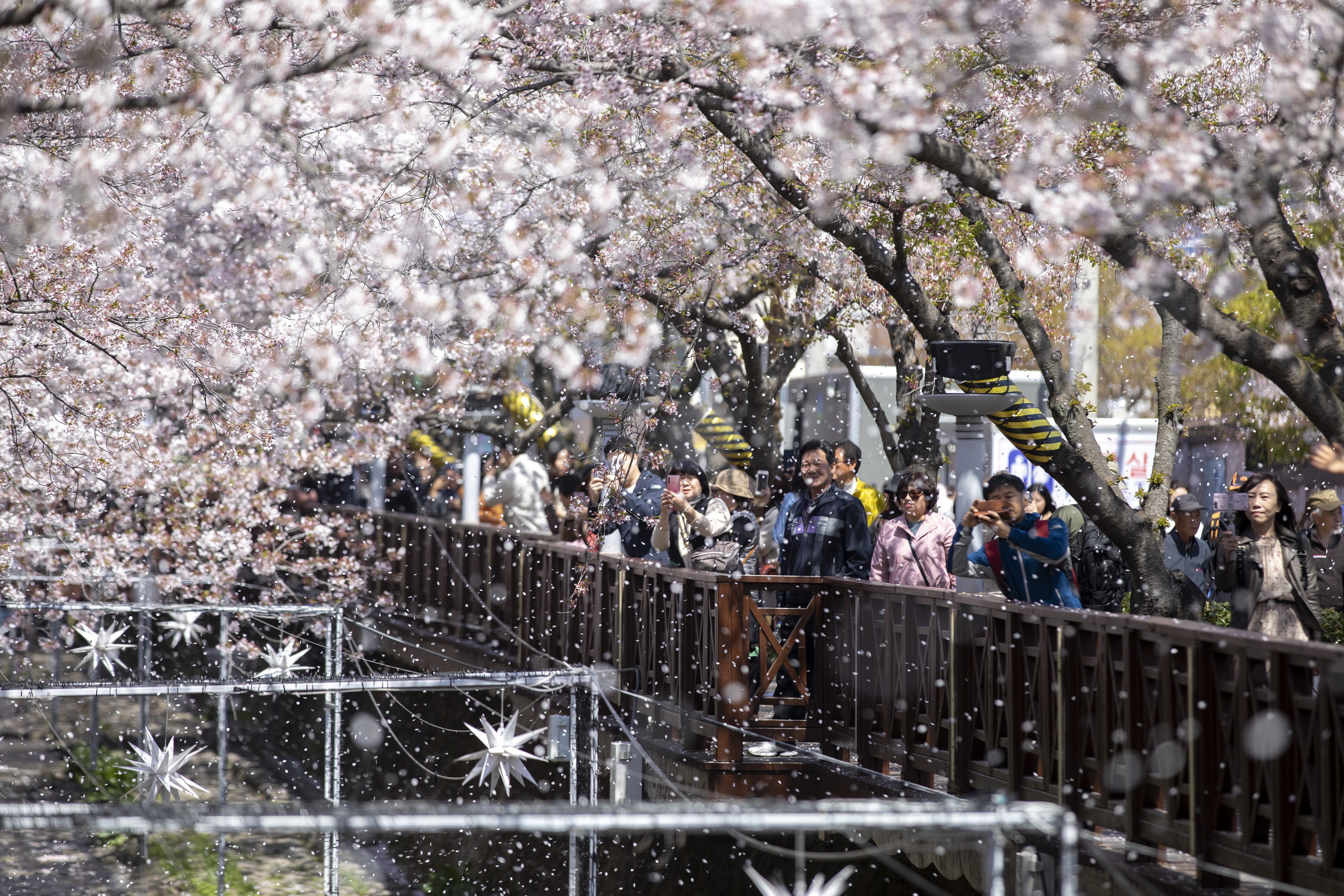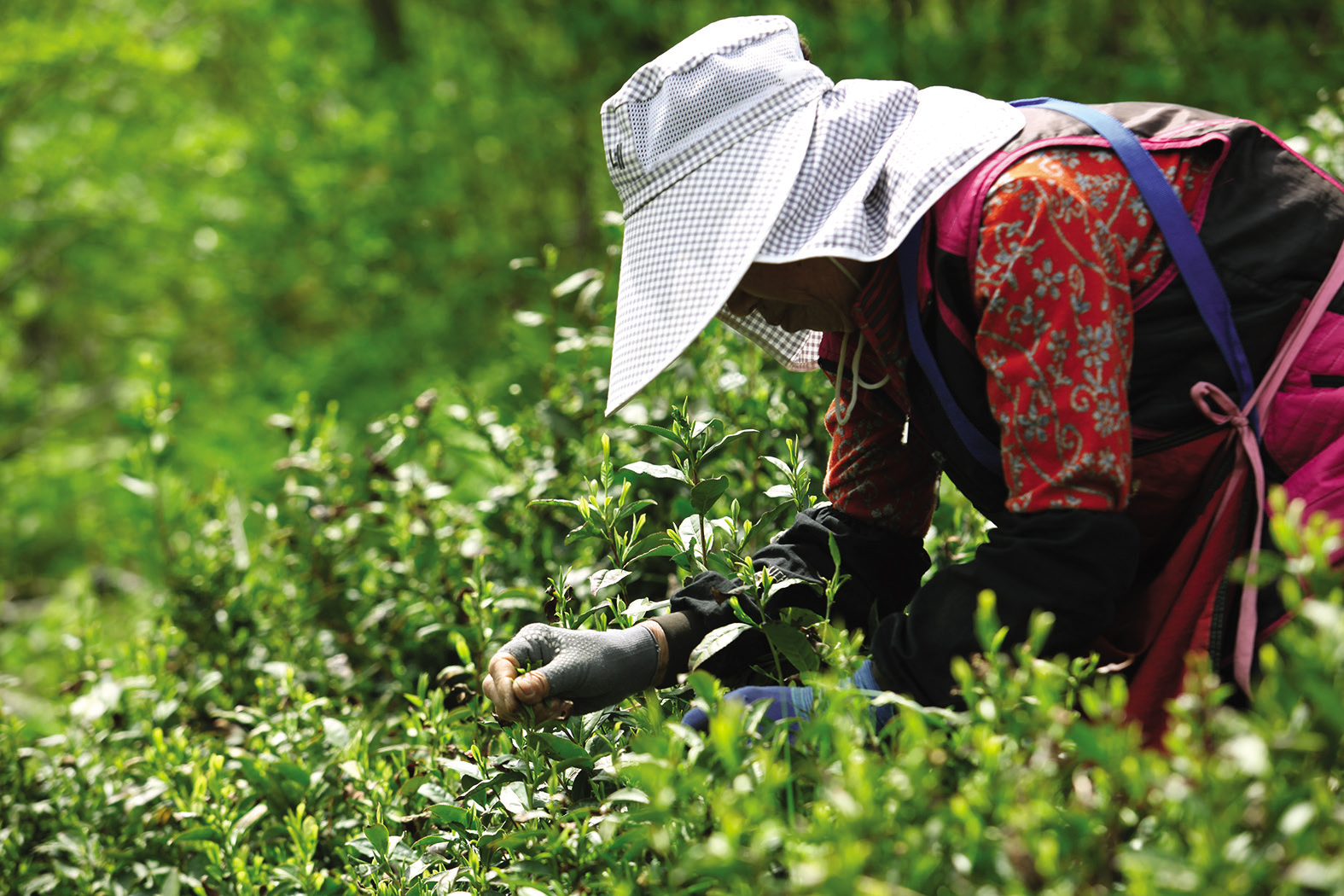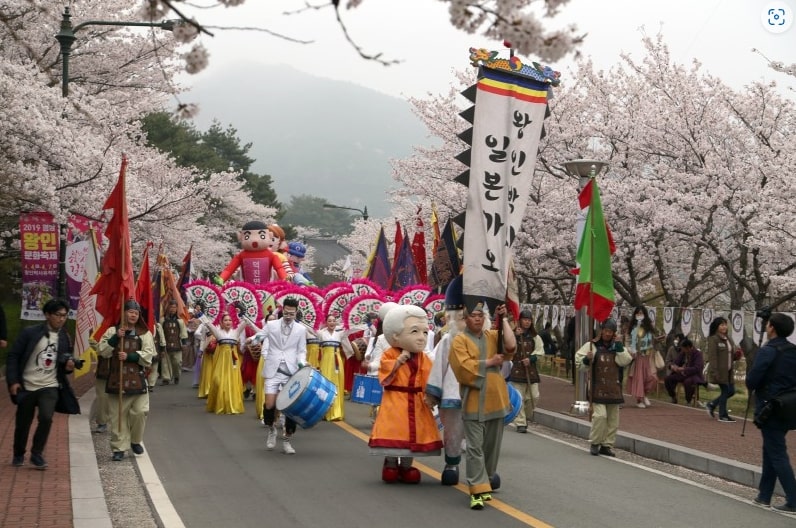[Mar] Festivals heighten the joy of spring
Date Mar 23, 2023
 Visitors take pictures of falling cherry blossoms during the Jinhae Gunhangje Festival in Changwon, Gyeongsangnam-do Province, April 5, 2019. (Korea Times photo by Shim Hyun-chul)
Visitors take pictures of falling cherry blossoms during the Jinhae Gunhangje Festival in Changwon, Gyeongsangnam-do Province, April 5, 2019. (Korea Times photo by Shim Hyun-chul)
After a long, cold winter, most outdoor activities in Korea begin in spring. Flower blossoms, seasonal delicacies, cultural programs and other attractions lure people out into the warm weather. Spring is also one of the two seasons – the other being fall – when the most regional festivals are held across the country.
Here are some suggestions:
Take in cherry blossoms at Jinhae Gunhangje Festival
Dozens of flower festivals take place during spring, and the types vary with many to choose from – cherry blossoms, cornelian cherry flowers, canola blossoms, apricot flowers and others.
The most common festival involves cherry blossoms, and many local governments around the country highlight their pink flowers. The most famous and iconic is the Jinhae Gunhangje Festival (jgfestival.or.kr).
Held in the naval port city of Changwon, Gyeongsangnam-do Province, the festival dates back to 1952 when the nation’s first-ever statue of the legendary Admiral Yi Sun-sin of the Joseon Dynasty (1392-1910) was erected in Jinhae, a town which has now been absorbed as a district of Changwon. As Jinhae was a key Republic of Korea naval base, the Gunhangje began as a small event to commemorate the admiral, but the beauty and density of the region’s cherry blossoms attracted large numbers of visitors. The city eventually expanded the event into the largest cherry blossom festival in Korea.
In springtime, over 360,000 cherry trees are in full bloom in and around Changwon. The picturesque scenes of pink petals fluttering in the spring breeze attract millions of sightseers from all over Korea and the world.
This year’s event, from March 24 to April 3, is expected to draw an especially large number of visitors as it returns after a three-year hiatus due to the COVID-19 pandemic.
The festival also offers a military band parade and several cultural and art events, including a multimedia fireworks show and a folklore market.
 Tea leaves are hand-picked by a farmer in Hadong, Gyeongsangnam-do Province. Hadong, a famous tea-producing region, hosts a tea festival every year, which will be expanded to a tea expo this year. (Courtesy of Hadong World Tea Expo Operating Committee)
Tea leaves are hand-picked by a farmer in Hadong, Gyeongsangnam-do Province. Hadong, a famous tea-producing region, hosts a tea festival every year, which will be expanded to a tea expo this year. (Courtesy of Hadong World Tea Expo Operating Committee)
Sip tea at World Tea Expo 2023 Hadong
Hadong in Gyeongsangnam-do Province has been the center of tea production in Korea since the Unified Silla Dynasty (668 - 935 CE), when Korea’s first tea farm was created. It is the birthplace of the country’s tea tradition and a must-see destination for tea lovers.
The region’s fluctuating daily temperature and foggy climate influenced by the nearby Seomjin-gang River are optimal for native wild tea cultivation. Due to its excellent quality, Hadong green tea was called “the king’s tea” as it was served to the monarch and royal families throughout the Goryeo and Joseon dynasties. Up to today, Hadong has stayed at the forefront of Korea’s green tea exports, and its distributers include Starbucks.
Backed by such a rich history and a plethora of tea plantations, Hadong began hosting the annual Hadong Wild Tea Cultural Festival in 1996. This year, the festival will be expanded into World Tea Expo (www.hadongt.co.kr), following the government’s approval for an international event in 2020.
Various events are planned from May 4 to June 3 throughout Hadong-gun County, mainly around the Wild Tea Museum and Hadong Sports Park. Visitors can experience several tea-related events: a royal tea ceremony, a contest for the best tea-based food and drinks and tasting sessions featuring a wide range of tea from around the world, among others. Exhibitions and a tour of cultural heritage sites on nearby Jirisan Mountain will also be available.
 Performers in traditional costumes march at a parade during the Yeongam Wangin Culture Festival in Yeongam-gun County, Jeollanam-do Province, in 2019. (Courtesy of Yeongam County)
Performers in traditional costumes march at a parade during the Yeongam Wangin Culture Festival in Yeongam-gun County, Jeollanam-do Province, in 2019. (Courtesy of Yeongam County)
Honor an ancient scholar
Yeongam Wangin Culture Festival (wangin.kr) is an annual festival that celebrates the achievements of Wangin, an ancient scholar from the Baekje Kingdom (18 BCE-660 CE), in Yeongam, Jeollanam-do Province, where he was born.
Wangin traveled to Japan over 1,600 years ago upon the request of the Japanese emperor and spread Korea’s knowledge, culture and arts, according to Japan’s second oldest historical chronicle, Nihon Shoki.
He is known to have introduced the people of Japan to the Analects, one of the most important Confucian texts, and the Thousand Character Classic, the basic textbook of Chinese characters. Both works are believed to have widely influenced Japan’s politics, economy, arts and culture.
Yeongam has hosted the festival in his memory every spring since 1992, and due to the rich cultural and regional heritage reflected in the event, it has been named one of the nation’s premier festivals by the Ministry of Culture, Sports and Tourism.
The festival’s climax is a parade that reenacts the scholar departing Yeongam for Japan. Also traditional folk sports (juldarigi, tug-of-war), dances (ganggangsullae, women’s circle dance) and performances (samul nori, percussion music for farmers) are demonstrated by locals dressed in traditional costumes.
This year’s festival takes place from March 30 to April 2.
**If you have any questions about this article, feel free to contact us at kocis@korea.kr.**

The Ministry of Culture, Sports and Tourism's "Korea Here & Now" work can be used under the condition of "Public Nuri Type 1 (Source Indication)."




